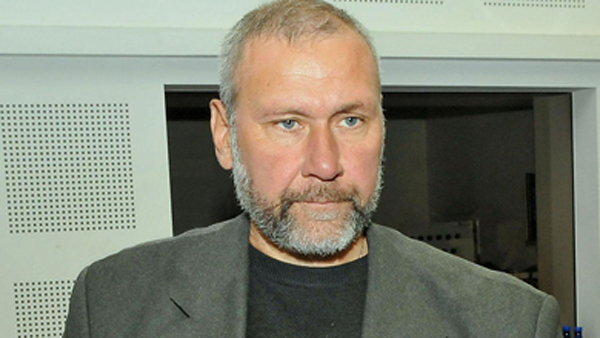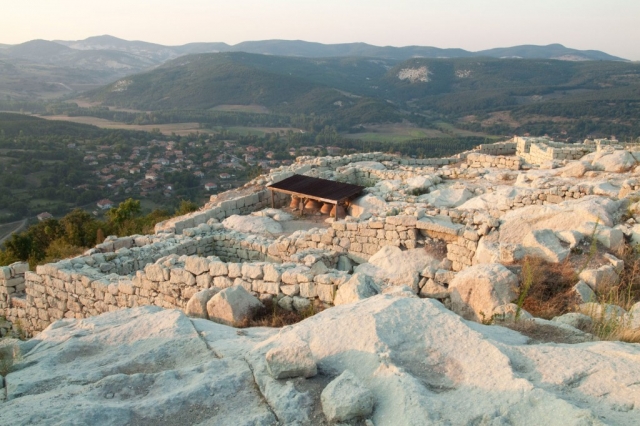Anastasia Balezdrova
We found Prof. Ovcharov at the excavations at Perperikon. "This year the excavations were late in starting and now we have to dig when the weather is not the best for this activity," said the famous Bulgarian archaeologist before answering the questions of GRReporter. They concerned all the open issues related to the history of the Balkans from antiquity to the present day, as to whom the sites and historical figures belong.
 Mr. Ovcharov, important excavations have been taking place in the Balkans in recent months again. What were the relations between the Macedonian kingdom and the Thracian tribes?
Mr. Ovcharov, important excavations have been taking place in the Balkans in recent months again. What were the relations between the Macedonian kingdom and the Thracian tribes?
I basically excavate more ancient periods of the Macedonian kingdom, because the main bloom of Perperikon was in the second millennium BC, in the time of the Trojan War, when a huge city was actually built in the rocks, with many stone altars. This is interesting because it happened 1000 years before the Macedonian kingdom.
We are seeking the sanctuary of Dionysus in this city in the rocks. Of course, it was functioning during the Macedonian kingdom too. According to one of the assumptions, Alexander the Great himself came to this place and had one of the prophecies for his march in Asia.
Later, after the 1st, and until the 4-5th, century, we have a more active Hellenistic period. Then the Goths burned Perperikon, thus marking the beginning of its medieval history. In the 4th and the 14th century, it was a very important city, for which Bulgaria and Byzantium had repeatedly fought. One reason for this, in addition to its religious importance, was the extraction of gold in its vicinity. The idea of gold extraction and the iconic nature of gold are embedded in the name of Perperikon in Greek, Hyperperakion.

Would you tell us more about the icons that you found in Zlatograd earlier this year.
In fact, I did not find them, the restorers did. I made the announcement about them, so to say. Zlatograd is one of the most interesting cities in Bulgaria. There Bulgarian and Greek cultures meet as early as the Renaissance. This is because trade routes south to the Mediterranean and the city of Xanthi, which is located only 50 km away from Zlatograd, cross the city. Its meaning is important today too, because of the opening of the passage.
In the 19th century, there was a huge economic boom in Zlatograd, as the goods that travelled from Plovdiv to Xanthi and the port in Kavala passed through the city. That is where the prosperity in cultural terms came from because, in addition to the beautiful architecture, the city boasts two of the earliest churches from the Renaissance period, which are in the Rhodope Mountains. One church is the "Virgin Mary" that dates back to 1834. It is one of the first four churches built in the Rhodope Mountains after the regime against the Christians in the Ottoman Empire had slightly weakened. Moreover, the masters who built the "Virgin Mary" church erected the old church in Komotini a few months later. Then the two regions did not belong to two different countries but were in one perimeter. The other church, "St. George", dates back to a later period, namely to 1851.
These two churches became the centre of Zlatograd’s revival and we found these icons in them. Among them, there are some rare icons, for example by Zachary Zograph who painted there during his trip to Mount Athos. Others were painted by artists from different schools, namely in Tryavna, Samokov, the Edirne school, which was also very developed.
The icon that has drawn a great interest, that of the Virgin Mary, stabbed with a knife in the heart, is the work of a master from Edirne, Nikola Odrinchanin, and dates back to around the middle of the 19th century. These icons are added to what we know of Zlatograd, of its wonderful artists and the people who financed culture at that time.

This year marked 1000 years since the death of Tsar Samuel. Do you think that he was properly commemorated in Bulgaria?
Yes, in my opinion it was a proper commemoration. Personally, I could not participate in it although I am the author of one of the articles in the catalogue issued by the National Archaeological Museum and of its most important part at that, which is about the inscriptions from the time of Samuel. In them, the Bulgarian autocrats designate themselves as "autocrats of Bulgaria", "Bulgarian autocrats", and as "native Bulgarians", etc. This is a cancellation of everything that today's Macedonian historians state, and a very important fact. In the 11th century, no one would call himself a native Bulgarian if he were Macedonian, as they claim.
I know you will ask me about the island of St. Achilles and the so-called bones of Tsar Samuel. I say "so-called" not because I do not believe that, just because it is still a hypothesis. Their discovery by Prof. Mutsopoulos is really important for Bulgarian science and culture, and not only for them.